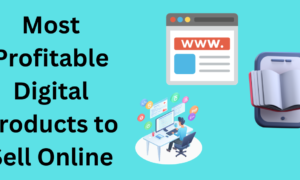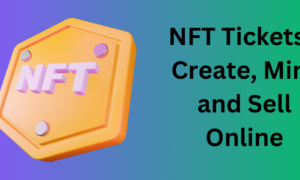In today’s fast-paced digital landscape, merely having a website is insufficient to stay competitive. Search Engine Optimization (SEO) is essential for enhancing the value of your online business. SEO involves optimizing your website to rank higher in search engine results, making it easier for potential customers to find you. Effective SEO drives organic traffic, increases visibility, and builds credibility, which is crucial for attracting and retaining customers.
By strategically using keywords, creating high-quality content, and ensuring a user-friendly experience, SEO helps your business stand out in a crowded market. A well-executed SEO strategy can transform your online presence, increasing sales and long-term success.
Increasing the Value of Your Online Business – How To Use SEO
Understanding SEO
What is SEO?
SEO, or Search Engine Optimization, enhances a website to achieve higher rankings on search engine results pages (SERPs). This process involves strategies, techniques, and tactics designed to improve the site’s visibility when users search for relevant keywords and phrases. Critical components of SEO include keyword research, content optimization, and technical improvements.
By identifying and using the right keywords, creating high-quality and relevant content, and ensuring the website is technically sound (e.g., fast loading and mobile-friendly), SEO helps attract more organic traffic. Effective SEO increases the likelihood of being found by potential customers and builds credibility and trust with search engines and users alike.
Importance of SEO in the Digital Age
In digital marketing, SEO is crucial for standing out among millions of competing websites. A solid SEO strategy ensures that your business appears prominently in search engine results, making it easier for potential customers to find you. Effective SEO targets the right audience by using relevant keywords and high-quality content, which improves your site’s visibility and attracts users actively searching for your products or services.
This drives organic traffic to your website and enhances credibility and trust with search engines and users. A well-executed SEO strategy leads to increased brand awareness, higher conversion rates, and sustained business growth.
Overview of SEO’s Impact on Online Businesses
A well-implemented SEO strategy can dramatically boost your online visibility, ensuring your website ranks higher in search engine results. Increased visibility drives more organic traffic to your site, as potential customers find you more easily. High-quality content and relevant keywords play a key role in attracting this audience.
Additionally, a robust SEO approach builds credibility and trust with search engines and users, as appearing at the top of search results signals authority and reliability. These factors collectively lead to higher conversion rates as more visitors become customers, increasing sales. A robust online presence established through effective SEO fosters long-term business growth and success.
Why SEO Matters for Online Businesses
Enhancing Online Visibility
Imagine owning a store on a busy street without a signboard to attract customers—few people would notice it, despite its prime location. SEO acts like that crucial signboard for your online business. It ensures your website is visible to people searching for your products or services. Without SEO, your site might be hidden among millions of others, missing opportunities to attract potential customers.
A good SEO strategy helps your website appear in search engine results when relevant keywords are used, effectively guiding users to your virtual storefront. This visibility is essential for driving organic traffic, building brand awareness, and converting visitors into customers. Just as a signboard draws attention to a physical store, SEO brings online attention to your business, ensuring you don’t miss out on valuable opportunities in the digital marketplace.
Driving Organic Traffic
Organic traffic refers to visitors discovering your website through unpaid search results on search engines like Google. This type of traffic is precious because it consists of individuals actively seeking your site’s information, products, or solutions. Unlike paid advertising, where visitors might arrive through ads, organic traffic comes from genuine interest and intent.
These visitors are more likely to engage with your content, spend time exploring your site, and ultimately convert into customers. High organic traffic indicates that your SEO strategies make your site easily discoverable and relevant to users’ search queries. This boosts your site’s credibility and trustworthiness and contributes to sustained long-term growth and success.
Building Brand Credibility and Trust
Higher search engine rankings are closely linked to credibility and trust. When your website appears on the first page of search results, it signals to users that your business is reputable and authoritative. People tend to trust search engines like Google first to provide the most relevant and trustworthy information. As a result, they are more likely to click on top-ranking sites, believing them to be the best sources for their needs. This visibility attracts more visitors and enhances your brand’s perception.
Being at the top of search results indicates that your site meets quality standards, has valuable content, and is well-regarded by others online. This boosts user confidence, making them more likely to engage with your business, explore your offerings, and convert into customers. Thus, high search engine rankings are crucial in establishing and maintaining your business’s credibility.
Keyword Research and Its Significance
Identifying Target Keywords
Keywords are the cornerstone of SEO. They are the terms and phrases that potential customers use when searching for products or services online. Identifying the right keywords is crucial for creating an effective SEO strategy. This process involves researching and understanding your target audience’s language and queries. Knowing these search terms lets you optimize your website’s content to match what users seek.
Tools like Google Keyword Planner, Ahrefs, and SEMrush help discover keywords with high search volume and low competition. Using the right keywords strategically in your content, meta tags, and headers ensures your site ranks higher in search engine results. This increases your visibility to potential customers actively seeking solutions, driving more targeted and valuable traffic to your site. In essence, well-chosen keywords connect your business with its intended audience, forming the foundation for successful SEO.
Tools for Keyword Research
Several tools are available to aid keyword research, including Google Keyword Planner, Ahrefs, and SEMrush. These tools are invaluable for finding keywords with high search volumes and low competition, which are crucial for effective SEO strategies. Google Keyword Planner offers insights into keyword popularity and trends directly from Google’s vast data pool. Ahrefs provides comprehensive keyword analysis, including search volume, keyword difficulty, and competitive analysis, making it easier to identify profitable keywords.
SEMrush offers features, including keyword research, site audits, and competitive analysis, helping you find the best keywords to target. Using these tools, you can uncover which terms your potential customers are searching for, understand the competitive landscape, and tailor your content to rank higher in search results. This strategic approach ensures that your website attracts the right audience, driving more organic traffic and improving online visibility.
Long-Tail vs. Short-Tail Keywords
Long-tail keywords are longer and more specific phrases, such as “best vegan restaurants in New York City,” while short-tail keywords are shorter and more general, like “vegan restaurants.” Long-tail keywords typically have lower search volumes but higher conversion rates. This is because they target particular queries that indicate a clear intent from the searcher. For example, someone searching for “best vegan restaurants in New York City” is likely ready to decide, whereas someone searching for “vegan restaurants” might just be starting their research.
Although fewer people search for long-tail keywords, those who do are often closer to making a purchase or taking a specific action. By targeting long-tail keywords, businesses can attract a more targeted audience, leading to better engagement, higher conversion rates, and increased sales. This makes long-tail keywords a valuable part of an effective SEO strategy.
On-Page SEO Techniques
Optimizing Title Tags and Meta Descriptions
Title tags and meta descriptions are essential elements of on-page SEO. Title tags serve as clickable headlines in search engine results and give search engines and users a concise summary of the page’s content. A well-crafted title tag should be clear, include relevant keywords, and be within the optimal length to ensure it displays correctly in search results.
Meta descriptions, conversely, are summaries that appear below the title tags in search results. While they don’t directly impact search rankings, they significantly influence click-through rates by compelling users to visit your page. A well-written meta description should be informative, include relevant keywords, and incorporate a call-to-action to entice users to click.
Together, title tags and meta descriptions help search engines understand the context of your content and play a crucial role in attracting and guiding users to your website.
Importance of Header Tags (H1, H2, H3, H4)
Header tags, such as H1, H2, H3, and so on, are essential for organizing content on a webpage. They serve multiple purposes that benefit both SEO and user experience. For search engines, header tags provide a clear structure, indicating the hierarchy and relevance of the content, making it easier for search engine crawlers to understand and index your site effectively.
Header tags enhance readability for users by breaking up content into manageable sections. This organization helps users quickly scan the page and find the information they need without feeling overwhelmed by large blocks of text.
For example, the H1 tag usually represents the page’s main topic, while H2, H3, and other subheaders break down the content into subtopics, making it easier to navigate. By improving search engine crawling and user experience, header tags play a crucial role in a successful SEO strategy and overall site usability.
Content Optimization
High-quality content that provides value to your audience is crucial for successful SEO. This involves using keywords naturally within the text, ensuring they fit seamlessly into the content without keyword stuffing. Comprehensive information is critical; your content should thoroughly address the topic, answering potential questions and offering valuable insights.
Well-structured content enhances readability and engagement, breaking information into clear sections with headers, bullet points, and visuals where appropriate. Engaging content keeps readers interested and encourages them to spend more time on your site, reducing bounce rates and increasing the likelihood of conversions.
High-quality content is more likely to be shared, attracting backlinks and boosting your site’s authority. Focusing on creating valuable, well-structured, and engaging content helps meet user needs, improves search engine rankings, and drives sustained traffic to your website.
Internal Linking Strategies
Internal links are crucial components of website structure and SEO strategy. They connect different pages within your site, facilitating the distribution of page authority and enhancing site navigation. By linking related content together, internal links help search engines understand the hierarchy and relevance of your pages, improving overall website visibility and search rankings.
Additionally, internal links keep users engaged by guiding them to relevant content as they navigate your site. This encourages users to explore more pages and increases their time on your site, reducing bounce rates and improving user experience.
Strategic internal linking can also help highlight important pages and drive traffic to key conversion points, such as product pages or contact forms. Overall, internal links are vital in optimizing your website’s search engine visibility and user engagement.
Off-Page SEO Strategies
Backlink Building
Backlinks, also known as inbound links, are essential for SEO as they vote for other websites’ confidence. When reputable sites link to your content, search engines interpret this as endorsing your website’s credibility and authority. Quality backlinks signal to search engines that your content is valuable and trustworthy, which can positively impact your search rankings.
These links not only drive direct referral traffic but also contribute to improving your site’s visibility and domain authority. However, it’s crucial to prioritize quality over quantity when building backlinks. Obtaining links from spammy or low-quality websites can negatively impact your SEO efforts. Therefore, acquiring backlinks from authoritative and relevant sources is key to enhancing your website’s search engine rankings and overall online visibility.
Social Media Engagement
Active engagement with your audience on social media platforms can significantly benefit your website’s SEO efforts. Sharing valuable content and interacting with followers can drive traffic to your site from social media channels. When users engage with your posts by liking, sharing, or commenting, it increases visibility and indicates to search engines that your content is relevant and engaging.
Search engines consider social signals, such as shares, likes, and comments, as indicators of content quality and authority. While they may not directly impact search rankings, they contribute to building brand awareness, increasing your content’s reach, and attracting more organic traffic over time. Therefore, maintaining an active presence on social media and fostering meaningful interactions with your audience can indirectly support your SEO efforts and help improve your website’s visibility in search engine results pages.
Guest Blogging and Influencer Collaborations
Collaborating with influencers and contributing guest posts to reputable websites can greatly benefit your SEO strategy. These partnerships enable you to acquire valuable backlinks from authoritative sources, crucial for improving your website’s search engine rankings. Additionally, by leveraging the reach and influence of these collaborators, you can expand your audience and attract more traffic to your site.
Furthermore, being associated with respected influencers and industry publications can enhance your brand’s credibility and authority within your niche. This association increases brand visibility and instills trust among your target audience, ultimately driving more engagement and conversions. Overall, influencer collaborations and guest blogging opportunities offer a strategic approach to building backlinks, driving traffic, and establishing authority, all of which are essential for a successful SEO campaign.
Technical SEO Aspects
Site Speed and Performance
A fast-loading website is crucial for providing an optimal user experience and plays a significant role in SEO rankings. Pages that load quickly satisfy users by delivering content promptly, reducing bounce rates, and increasing engagement. Search engines prioritize websites with faster loading times, considering them more user-friendly and valuable to visitors.
Tools like Google PageSpeed Insights analyze your website’s performance and identify areas that need improvement to enhance loading speed. They provide valuable insights and recommendations to address large file sizes, inefficient code, or server response times. By optimizing these factors, you can improve your site’s loading speed, which positively impacts user experience and SEO rankings. Therefore, optimizing website speed is essential for ensuring a positive user experience and maintaining high search engine visibility.
Mobile-Friendliness
As the number of users accessing the internet through mobile devices continues to rise, having a mobile-friendly website is imperative. With Google’s mobile-first indexing, optimized websites for mobile viewing are prioritized in search engine rankings. This means that Google predominantly uses the mobile version of a website’s content for indexing and ranking rather than the desktop version.
Ensuring your site is mobile-friendly involves creating a responsive design that adapts seamlessly to various screen sizes and resolutions. This enhances the user experience for mobile visitors and improves your site’s search engine visibility. A mobile-friendly website loads quickly, features easily accessible navigation, and provides a seamless browsing experience, regardless of the device used.
By prioritizing mobile optimization, you can effectively reach and engage with a broader audience while maintaining a competitive edge in search engine rankings.
Secure Sockets Layer (SSL) and HTTPS
Security is paramount for both search engines and users when browsing the internet. An SSL (Secure Sockets Layer) certificate encrypts data transmitted between a user’s browser and your website’s server, ensuring that sensitive information remains private and secure.
An SSL certificate on your site protects user data and boosts your search engine rankings. Search engines like Google prioritize secure websites in their rankings, considering them more trustworthy and reliable. Additionally, displaying a padlock icon or “https” in the URL bar signals to users that your site is secure, instilling confidence and trust in your brand.
By prioritizing website security with an SSL certificate, you safeguard sensitive information and enhance your site’s credibility, user trust, and search engine visibility.
XML Sitemaps and Robots.txt
XML sitemaps and robots.txt files are essential components of technical SEO that play crucial roles in helping search engines understand and navigate your website.
XML sitemaps provide search engines with a roadmap of your site’s structure, listing all the pages and their relationships. This allows search engine crawlers to discover and index your content more efficiently, ensuring that no pages are missed during the crawling process.
On the other hand, robots.txt files serve as a set of instructions for search engine crawlers, specifying which pages they are allowed to crawl and index. By controlling crawler access to certain parts of your site, you can prevent sensitive or irrelevant pages from appearing in search results, ultimately improving the quality and relevance of your site’s indexation.
In summary, both XML sitemaps and robots.txt files are essential for optimizing your site’s technical infrastructure and enhancing its visibility in search engine results.
Content Marketing and SEO
Creating High-Quality Content
Content is the cornerstone of successful SEO strategies. High-quality, informative, and engaging content is pivotal in attracting visitors to your website and keeping them engaged. By providing valuable information, addressing user needs, and offering solutions to their queries, quality content satisfies users and encourages them to spend more time on your site.
This increased dwell time signals to search engines that your content is relevant and valuable, which can positively impact your search rankings. Moreover, well-crafted content that incorporates relevant keywords naturally helps search engines understand the context of your website and improves its visibility in search results.
By consistently creating and publishing valuable content, you can establish authority in your niche, attract organic traffic, and ultimately drive conversions. Content is king in SEO because it serves as the foundation for attracting and retaining users while boosting your site’s search engine rankings.
The Role of Blogs and Articles
Regularly updating your website with fresh blog posts and articles is essential for maintaining relevance and SEO performance. These updates provide more opportunities to target relevant keywords and signal to search engines that your site is active and regularly offers valuable content for users.
Moreover, consistently publishing informative and engaging content helps establish expertise and authority in your industry or niche. By sharing valuable insights, addressing common questions, and providing solutions to user problems, you can build trust with your audience and keep them engaged with your brand.
Regular updates to your website’s content improve its crawl frequency, prompting search engine bots to revisit your site more frequently and index new content faster. This, in turn, can lead to improved search engine rankings and increased organic traffic over time. Therefore, maintaining a schedule of regular blog and article updates is crucial for driving SEO success and keeping your audience informed and engaged.
Video Content and Infographics
Visual content, such as videos and infographics, holds significant potential for boosting user engagement and shareability on your website and social media platforms. These visually appealing formats capture users’ attention more effectively than text alone, making them more likely to interact with and share your content.
Moreover, visual content offers additional opportunities to rank in search engine results, particularly for video searches. Platforms like YouTube and Google prioritize video content, making it easier for your videos to appear prominently in search results and reach a wider audience.
Infographics, on the other hand, convey complex information in a visually appealing and digestible format, making them highly shareable across various platforms and increasing your content’s reach.
In summary, incorporating visual content into your marketing strategy enhances user engagement and expands your opportunities to rank in search engines, ultimately driving more traffic and increasing brand visibility.
Local SEO
Importance for Small Businesses
Local SEO is vital for businesses targeting customers within specific geographic regions. By optimizing your online presence for local search, you can attract nearby customers who are actively seeking your products or services.
Local SEO strategies involve various tactics, such as optimizing your website for location-based keywords, claiming and optimizing your Google My Business listing, and garnering positive reviews from satisfied customers. These efforts help improve your visibility in local search results, increasing the likelihood of appearing in the coveted “local pack” and Google Maps listings.
By focusing on local SEO, businesses can connect with potential customers, drive foot traffic to physical locations, and establish a strong presence within their local community. Overall, prioritizing local SEO efforts can increase brand visibility, higher customer engagement, and, ultimately, more tremendous business success within your target geographic area.
Google My Business Optimization
Optimizing your Google My Business (GMB) listing is essential for enhancing your online visibility and attracting local customers. By providing accurate and detailed information about your business, such as your address, phone number, business hours, and website URL, you increase the likelihood of appearing in local search results and Google Maps.
A well-optimized GMB listing also allows you to showcase photos, respond to customer reviews, and highlight special offers or events, further enhancing your business’s appeal to potential customers. Additionally, by verifying your listing and keeping it regularly updated with relevant information, you signal to Google that your business is active and trustworthy, improving its chances of ranking higher in local search results.
Optimizing your Google My Business listing is a crucial step in local SEO that can significantly improve your online visibility and make it easier for local customers to discover and engage with your business.
Local Citations and Reviews
Local citations and positive reviews are integral in enhancing local SEO efforts and establishing credibility with potential customers. Local citations refer to mentions of your business name, address, and phone number (NAP) on other websites, such as online directories, local business listings, and review sites. These citations signal to search engines that your business is legitimate and relevant to local search queries, contributing to higher rankings in local search results.
Positive reviews from satisfied customers further strengthen your business’s reputation and trustworthiness in the eyes of search engines and potential customers. They provide social proof of your business’s quality, reliability, and customer satisfaction, influencing purchase decisions and attracting more visitors.
By actively managing and encouraging local citations and positive reviews, businesses can significantly improve their local SEO performance, increase visibility in local search results, and drive more foot traffic and sales.
Measuring SEO Success
Key Performance Indicators (KPIs)
Key Performance Indicators (KPIs) such as organic traffic, bounce rate, and conversion rates are essential metrics for evaluating the effectiveness of your SEO strategy. Organic traffic indicates the number of visitors reaching your website through unpaid search results, reflecting your site’s visibility and reach in search engines.
A lower bounce rate signifies visitors engaging with your content and exploring multiple pages, indicating relevance and user satisfaction. Conversion rates measure the percentage of visitors who take desired actions, such as making a purchase or filling out a contact form, indicating the effectiveness of your website in converting visitors into customers.
Regularly tracking these KPIs allows you to assess the impact of your SEO efforts and identify areas for improvement. By analyzing trends and patterns in these metrics over time, you can refine your SEO strategy, optimize content, and make informed decisions to drive better results and achieve your business objectives.
Google Analytics and Other Tools
Tools like Google Analytics offer invaluable insights into your website’s performance, allowing you to make informed decisions to enhance its effectiveness. By analyzing metrics such as website traffic, user engagement, and conversion rates, you can better understand how visitors interact with your site.
Google Analytics provides comprehensive data on user behavior, including where visitors come from, which pages they visit most frequently, and how long they stay on each page. Additionally, it tracks conversions, such as purchases or sign-ups, enabling you to measure the effectiveness of your marketing efforts and identify areas for improvement.
By regularly monitoring these metrics and leveraging the insights provided by Google Analytics, you can optimize your website to better meet your audience’s needs, drive more conversions, and ultimately achieve your business goals.
Adjusting Strategies Based on Data
SEO is not a one-time task but an ongoing process that requires constant attention and adjustment. Regular data analysis is essential to gauge your SEO efforts’ effectiveness and identify areas for improvement. By monitoring key metrics such as website traffic, keyword rankings, and conversion rates, you can assess the impact of your strategies and make informed decisions to optimize your website’s performance.
Moreover, staying updated with industry trends and algorithm changes is crucial to adapt your strategies accordingly and stay ahead of the competition. SEO is dynamic, and what works today may not work tomorrow. Therefore, ongoing monitoring, analysis, and adjustment of your SEO strategies are necessary to maintain and improve your website’s visibility and rankings and, ultimately, achieve your business goals in the ever-evolving digital landscape.
Common SEO Mistakes to Avoid
Keyword Stuffing
Keyword stuffing, or overloading your content with keywords, can harm your SEO efforts. While it may seem like a shortcut to improve rankings, search engines penalize websites that engage in this practice. Keyword stuffing makes your content appear unnatural and spammy, resulting in a poor user experience.
Instead, focus on using keywords naturally and strategically within your content. Incorporate them seamlessly into your writing while maintaining readability and relevance. Prioritize providing valuable and informative content that addresses the needs and interests of your audience. By offering high-quality content that resonates with users, you improve user experience and increase the likelihood of engagement, shares, and backlinks.
Ultimately, balancing optimizing for keywords and delivering valuable content is essential for effective SEO. It ensures your website ranks well in search results while satisfying user intent and expectations.
Duplicate Content
Duplicate content refers to identical or substantially similar content that appears on multiple pages within a website or across different websites. When search engines encounter duplicate content, they may struggle to determine which version to index and rank, leading to confusion and potentially lower rankings for affected pages.
Ensuring that each page on your website offers unique and valuable information is crucial to avoid issues with duplicate content. This helps search engines understand the relevance and context of each page but also enhances the overall user experience by providing diverse and informative content.
Implementing best practices such as canonical tags, redirects, and proper URL structures can help mitigate duplicate content issues and ensure your website performs well in search engine results. By prioritizing unique and valuable content, you can improve your website’s visibility, rankings, and overall SEO performance.
Ignoring Mobile Users
Mobile optimization is paramount for successful SEO strategies in today’s digital landscape. With most web traffic originating from mobile devices, neglecting mobile optimization can significantly affect your website’s visibility and rankings in search engine results.
Ensuring your site is responsive and mobile-friendly is crucial to providing a positive user experience across all devices. A responsive design automatically adjusts the layout and content of your website to fit various screen sizes and resolutions, ensuring consistency and usability across desktops, tablets, and smartphones.
Mobile-friendly websites load quickly, feature easily accessible navigation, and offer optimized content that is easy to read and interact with on smaller screens. By prioritizing mobile optimization, you improve user satisfaction and engagement and signal to search engines like Google that your site is user-friendly, which can positively impact your SEO efforts and overall online visibility.
SEO Trends to Watch in 2024
Voice Search Optimization
As smart speakers and voice assistants gain popularity, optimizing for voice search has become a crucial aspect of SEO. Unlike traditional text-based searches, voice search queries are more conversational and natural in language. Therefore, optimizing your content for long-tail keywords and conversational phrases is essential to align with how people speak when using voice search.
To effectively optimize for voice search, consider the context and intent behind users’ queries and create content that directly addresses their questions and needs. This may involve answering commonly asked questions, providing concise and informative responses, and structuring your content to mirror natural conversation.
By adapting your SEO strategy to accommodate voice search, you can improve your website’s visibility and relevance in voice search results, ultimately attracting more organic traffic and reaching a broader audience in the evolving landscape of digital search.
Artificial Intelligence and Machine Learning
AI (Artificial Intelligence) and machine learning revolutionize SEO (Search Engine Optimization). These technologies are increasingly being incorporated into tools and platforms designed to assist marketers in their SEO efforts.
AI-powered tools can streamline keyword research by analyzing vast amounts of data to identify relevant keywords and phrases with high search volume and low competition. Additionally, they can aid in content creation by providing insights into trending topics, audience preferences, and content optimization suggestions based on historical data and user behavior patterns.
Moreover, AI and machine learning algorithms can enhance data analysis capabilities, enabling marketers to gain deeper insights into website performance, user behavior, and search trends. By leveraging these advanced technologies, marketers can make data-driven decisions, optimize their SEO strategies, and stay ahead in the ever-evolving digital marketing landscape.
User Experience (UX) as a Ranking Factor
Google prioritizes delivering a positive user experience, which is reflected in its search engine algorithms. Site speed, mobile friendliness, and user-friendly navigation significantly impact a website’s SEO success.
Site speed is critical to user satisfaction, with faster-loading pages leading to higher engagement and lower bounce rates. Mobile-friendliness is essential as most web traffic now comes from mobile devices, and Google prioritizes mobile-responsive sites in its rankings. Additionally, easy navigation ensures that users can find what they’re looking for quickly and easily, leading to dwell times and increased page views longer.
By prioritizing these aspects of user experience, website owners can improve their site’s performance in search engine rankings, attract more organic traffic, and ultimately achieve more tremendous success in their SEO efforts.
The ROI of SEO
Cost-Effectiveness Compared to Paid Advertising
SEO (Search Engine Optimization) provides a higher long-term return on investment (ROI) than paid advertising. Although SEO requires time, effort, and ongoing maintenance, its benefits can be substantial and sustainable.
Unlike paid advertising, where visibility and traffic cease once the budget runs out, SEO efforts continue to yield results even after initial optimization. By improving organic search visibility, attracting targeted traffic, and increasing brand credibility and trust, SEO generates ongoing organic traffic without continuous advertising spend.
Additionally, users perceive organic search results as more trustworthy and credible, leading to higher click-through rates and conversions than paid ads. Furthermore, as SEO techniques evolve and improve, the long-term benefits of SEO investment continue to grow, making it a highly cost-effective and valuable strategy for businesses looking to maximize their online presence and ROI.
Long-Term Benefits
Unlike paid advertising, where traffic stops once the budget is exhausted, SEO offers long-term benefits that continue to grow over time. A well-optimized website for search engines can attract organic traffic and generate leads for years, even without ongoing investment in advertising.
SEO efforts, such as optimizing website content, improving site speed, and building high-quality backlinks, contribute to sustainable organic traffic growth. As search engines recognize the relevance and authority of optimized websites, they reward them with higher rankings, leading to increased visibility and traffic.
Moreover, the cumulative effect of SEO over time results in a compounding growth of organic traffic and leads. Unlike paid ads, which require continuous investment to maintain traffic levels, the benefits of SEO accrue over time, making it a highly cost-effective and valuable long-term strategy for businesses looking to establish a solid online presence and drive sustainable growth.
Case Studies of Successful SEO Campaigns
Numerous businesses have experienced substantial growth by implementing effective SEO strategies. Case studies provide compelling evidence of how a well-executed SEO approach can revolutionize online visibility and revenue generation.
Optimizing website content, improving site structure, and enhancing user experience can significantly improve businesses’ search engine rankings and attract more organic traffic. This increased visibility leads to greater brand exposure, more qualified leads, and higher conversion rates and revenue.
Case studies showcase real-world examples of businesses that have achieved remarkable success through SEO, illustrating the tangible benefits and ROI of investing in search engine optimization. From small startups to large corporations, businesses across various industries have leveraged SEO to expand their online presence, reach new audiences, and achieve sustainable growth. These success stories inspire and motivate other businesses looking to harness the power of SEO to drive their digital transformation and business success.
SEO and E-commerce
Product Page Optimization
Optimizing product pages is crucial for improving search rankings and driving sales. By incorporating relevant keywords into product titles, descriptions, and metadata, businesses can enhance the visibility of their products in search engine results pages.
Detailed and informative product descriptions help search engines understand the page’s content and provide valuable information to potential customers, improving user experience and increasing the likelihood of conversions. Additionally, high-quality images showcasing the product from various angles and contexts can further engage users and encourage them to purchase.
By optimizing product pages with relevant keywords, detailed descriptions, and compelling visuals, businesses can attract more qualified traffic, improve conversion rates, and drive sales and revenue growth.
User-Generated Content
Encouraging customers to leave reviews and share their experiences can significantly impact your SEO efforts. User-generated content, such as reviews, testimonials, and ratings, provides valuable insights into your products or services and signals to search engines that your business is reputable and trustworthy.
When customers leave reviews or share their experiences on platforms like Google My Business, Yelp, or social media, it creates fresh, relevant content that can improve your website’s visibility in search engine results pages. Additionally, user-generated content enhances credibility and builds trust with potential customers as they see real-life experiences from other consumers.
By actively soliciting and showcasing user-generated content, businesses can boost their SEO rankings, attract more organic traffic, and increase conversions and sales. Therefore, fostering a customer feedback and engagement culture is essential for driving SEO success and building a strong online reputation.
Structured Data and Rich Snippets
Implementing structured data and rich snippets is crucial for enhancing your website’s visibility and appearance in search engine results. Structured data provides search engines additional context about your content, making it easier for them to understand and index your website accurately. By incorporating structured data markup, such as schema.org, you can provide detailed information about your products, services, events, and more.
Rich snippets and enhanced search results with additional information such as ratings, reviews, pricing, and images help your listings stand out on search engine results pages (SERPs). They attract more clicks from users and provide valuable information upfront, improving the user experience.
Overall, implementing structured data and rich snippets helps search engines better understand your content and enhances the appearance and relevance of your listings in search results, ultimately driving more traffic to your website.
Conclusion
SEO (Search Engine Optimization) is essential for maximizing the value of your online business. A comprehensive SEO strategy focuses on improving visibility in search engine results, driving organic traffic to your website, and establishing credibility with your audience. By optimizing your website’s content, structure, and performance, you can attract more qualified leads and convert them into loyal customers.
Staying abreast of the latest SEO trends and algorithms is crucial for maintaining a competitive edge in the digital landscape. Continuously refining and adapting your strategies based on data insights and industry best practices ensures that your online presence remains relevant and effective over time.
Investing in SEO is an investment in your online business’s long-term success and growth. By prioritizing SEO efforts, you can unlock your website’s full potential and maximize its value in the ever-evolving digital marketplace.
FAQs
What is the most critical aspect of SEO?
The most important aspect of SEO is creating high-quality, relevant content that meets the needs of your audience. Without valuable content, other SEO strategies will not be as effective.
How long does it take to see results from SEO?
SEO is a long-term strategy that can take several months to see significant results. Patience and consistency are key to achieving and maintaining good rankings.
Can SEO help small businesses?
Absolutely! SEO is crucial for small businesses as it helps them compete with larger companies by increasing their visibility in local search results.
What are some free tools for SEO?
Some popular free SEO tools include Google Analytics, Google Search Console, Ubersuggest, and Moz’s Link Explorer. These tools provide valuable insights and help you optimize your site.
How often should I update my SEO strategy?
SEO is an ongoing process. It’s important to regularly review and update your strategy based on performance data, industry trends, and changes in search engine algorithms.



























